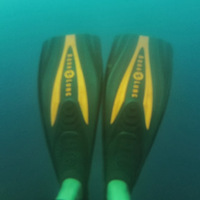Shrimp culture in the floating cage is expected to reduce the utilization of land and its possible negative impact to the environment. The advantages of shrimp farming in the sea include the high dissolved oxygen concentration and the... more
Shrimp culture in the floating cage is expected to reduce the utilization of land and its possible negative impact to the environment. The advantages of shrimp farming in the sea include the high dissolved oxygen concentration and the better meat quality. This research aimed to enhance the production performance of shrimp through the utilization of periphyton as a natural feed for shrimp. A completely randomized design with 3 treatments (in triplicates) were applied in this experiment, i.e floating cage without perishel (control), floating cage with PE perishel and PA perishel. Shrimp with body weight of 2.5 ± 0.2 g were stocked at the initial density of 2,000 shrimp in each cage, and maintained for 90 days. No significant difference was observed in the survival amongst treatments. The lowest feed conversion ratio (1.74) and coefficient of variance (3.21) were showed in treatment PA. The highest attachment and abundances of periphyton were found in treatment PA. It was concluded tha...
Shrimp culture in the floating cage is expected to reduce the utilization of land and its possible negative impact to the environment. The advantages of shrimp farming in the sea include the high dissolved oxygen concentration and the... more
Shrimp culture in the floating cage is expected to reduce the utilization of land and its possible negative impact to the environment. The advantages of shrimp farming in the sea include the high dissolved oxygen concentration and the better meat quality. This research aimed to enhance the production performance of shrimp through the utilization of periphyton as a natural feed for shrimp. A completely randomized design with 3 treatments (in triplicates) were applied in this experiment, i.e floating cage without perishel (control), floating cage with PE perishel and PA perishel. Shrimp with body weight of 2.5 ± 0.2 g were stocked at the initial density of 2,000 shrimp in each cage, and maintained for 90 days. No significant difference was observed in the survival amongst treatments. The lowest feed conversion ratio (1.74) and coefficient of variance (3.21) were showed in treatment PA. The highest attachment and abundances of periphyton were found in treatment PA. It was concluded tha...
